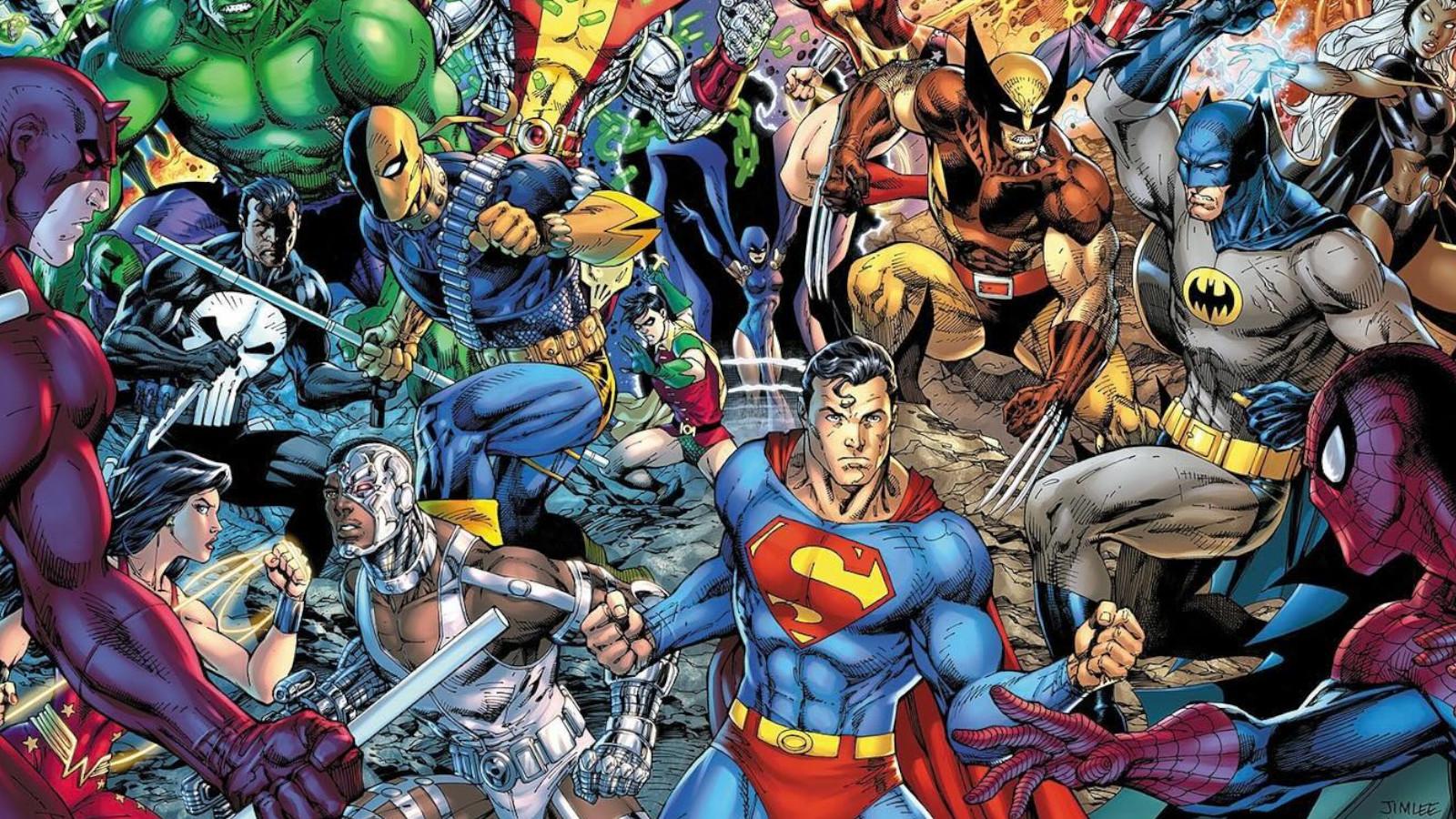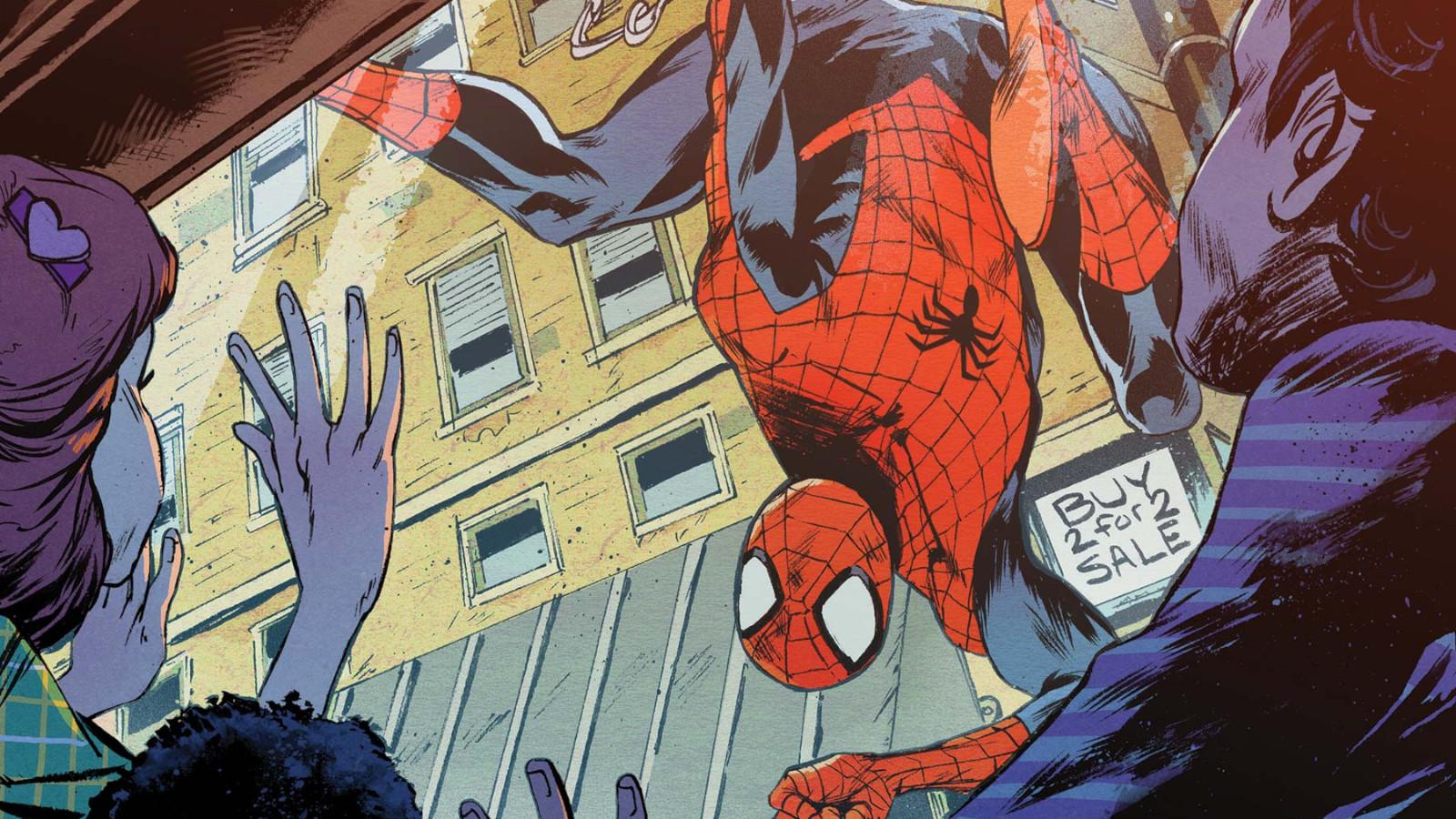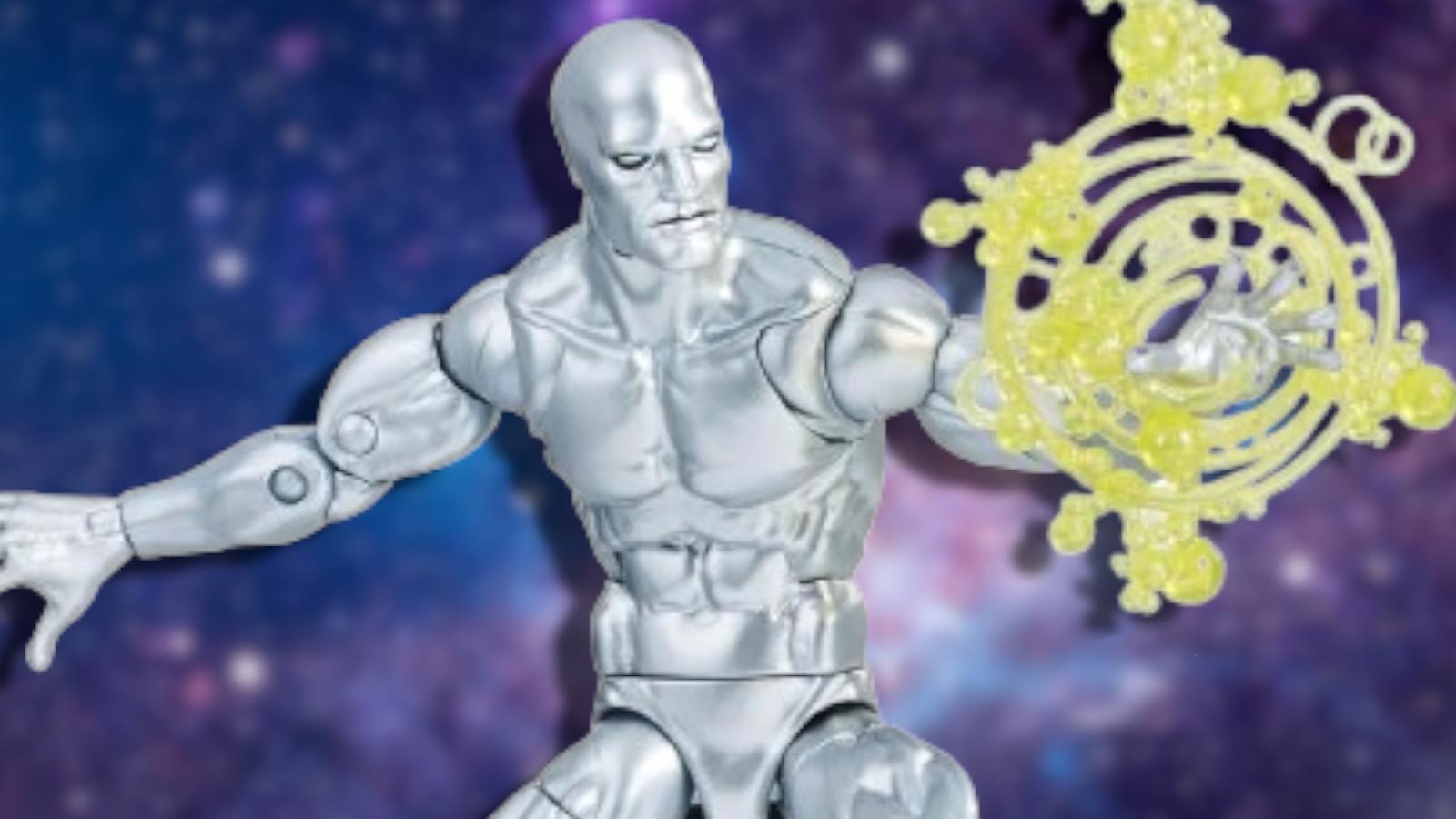How strong is Venom? Powers and weaknesses explained in Marvel comics
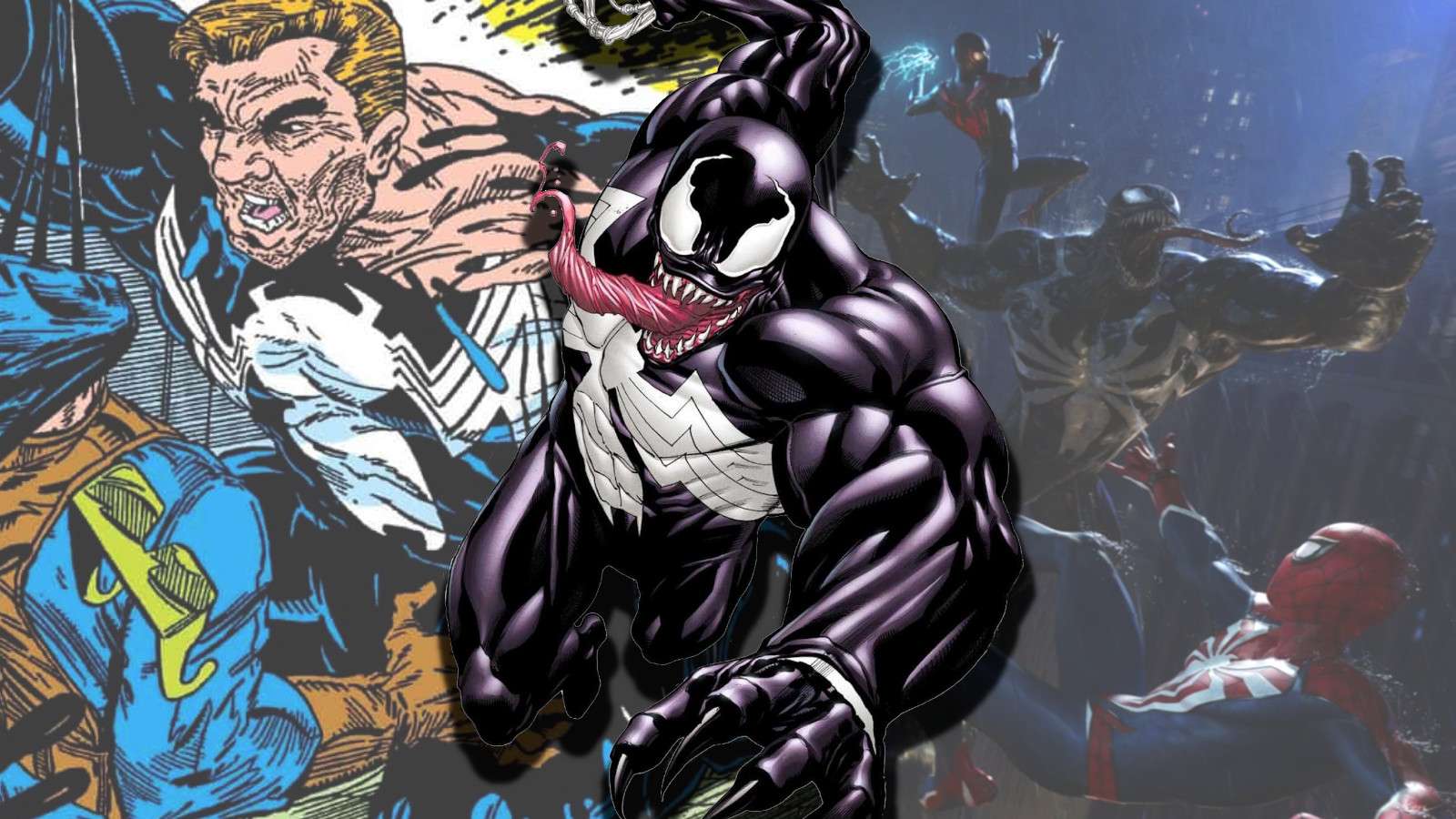 Marvel Comics/Insomniac
Marvel Comics/InsomniacSpider-Man’s terrifying nemesis Venom is returning to gaming in Marvel’s Spider-Man 2.
Venom returns to gaming in Marvel’s Spider-Man 2, and he’s bringing many of his comic book strengths and weaknesses with him.
Venom has long been one of Spider-Man’s most popular villains. Since his debut in Amazing Spider-Man #300, fans have loved the hulking symbiote nightmare, even if he’s always threatening to eat brains.
Venom is a member of the alien Klyntar race, a hive mind of symbiotes who seek out hosts. Unfortunately for us, Venom’s mind is a little broken, so sometimes he wants to kill a lot of people.
From lethal protector to government agent and space knight, Venom’s had a number of forms, roles, and abilities. But his base powers and weaknesses stay pretty much the same.
Venom’s Powers and Weaknesses in Marvel Comics
Before the character returns to gaming in Marvel’s Spider-Man 2, here are all of Venom’s powers and weaknesses explained.
 Marvel Comics
Marvel ComicsVenom has many of Spider-Man’s best powers
Much like Spidey, Venom has enhanced strength, speed, and durability. He can also regenerate from wounds incredibly quickly.
There’s also the webbing. Venom’s webbing is generated by the symbiote. This means it can actually tire itself out if it spends too much webbing, a feat Spider-Man pulled off once.
Venom’s strength is in the upper echelon of the Marvel Universe. If he so desires, he can go toe-to-toe with the likes of The Hulk or The Thing and hold his own easily.
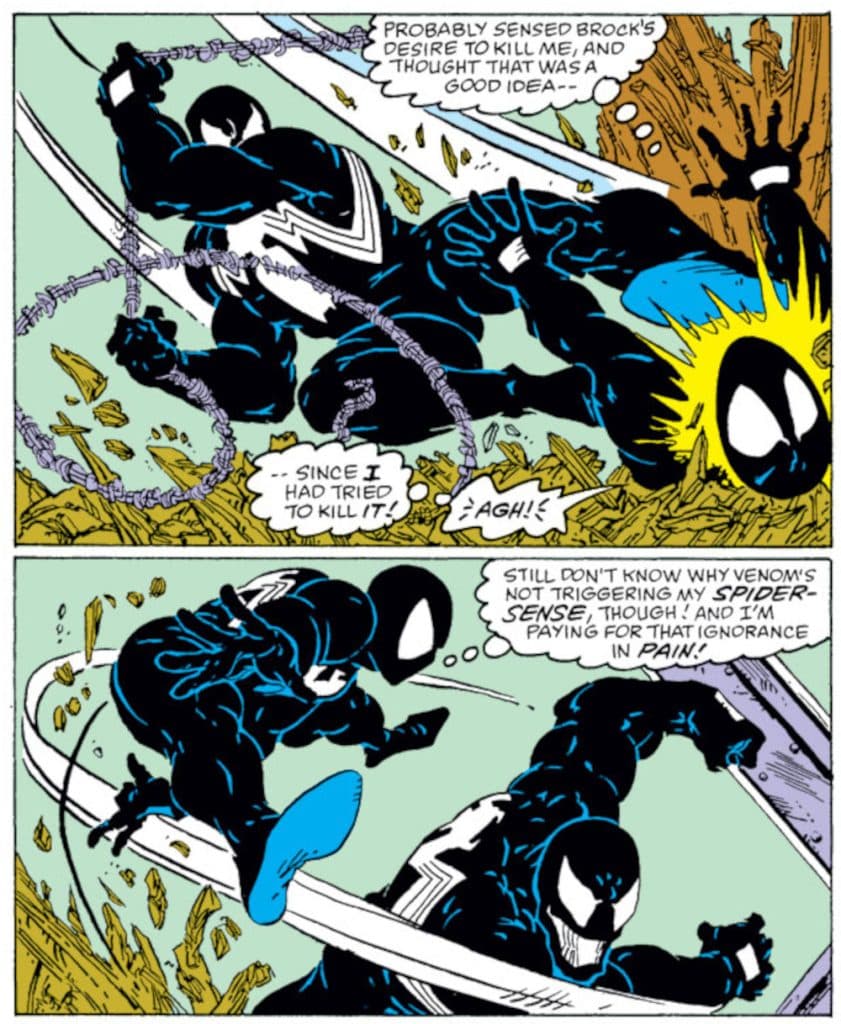 Marvel Comics
Marvel ComicsVenom can negate Spider-Man’s Spider-Sense
Venom is invisible to Spider-Man’s Spider-Sense. Because the symbiote was once merged with Spider-Man, it knows how to trick his senses.
This puts Spidey at an immediate disadvantage. Without his Spider-Sense, he never really knows where Venom is or where he’s coming from.
Venom himself doesn’t necessarily have a Spider-Sense. However, because the symbiote is a living organism, it has an enhanced awareness of its surroundings, so it’s incredibly difficult to sneak up on it.
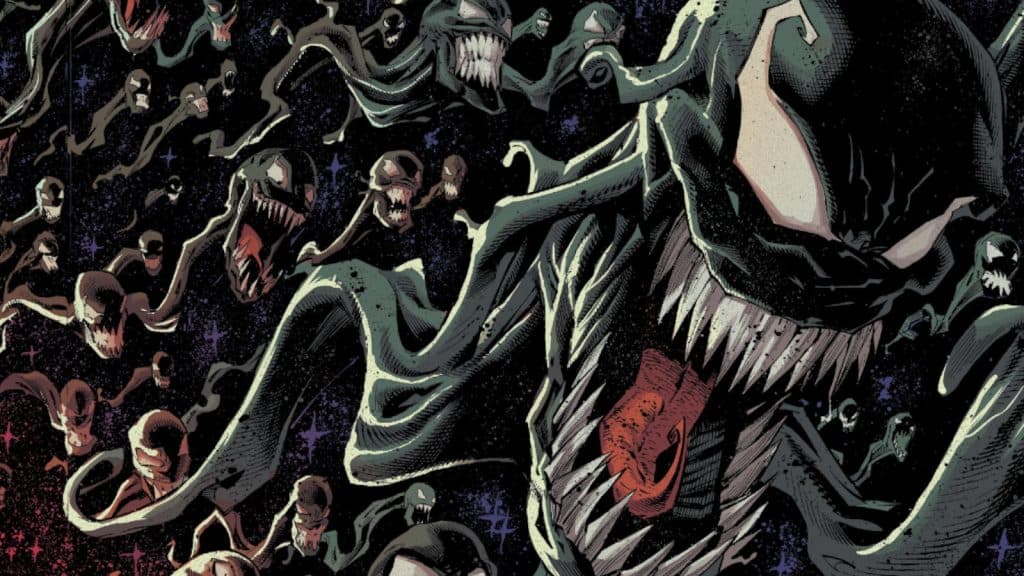 Marvel Comics
Marvel ComicsSymbiotes are amorphous, living organisms
Symbiotes themselves are living beings and can do a number of incredible feats. They have both a genetic and hive memory, which can communicate throughout space (and, in some stories, time) to share knowledge and coordinate movement.
It also means a symbiote doesn’t really have a defined shape. The Venom symbiote tends to be more human-like, but it can change shape into anything it wants, whether that’s becoming a hulking beast or assuming the shape of Eddie Brock’s clothes to go incognito.
There are also other forms it can take on, like Agent Venom and the Space Knight form. Most recently, as the King in Black, Venom gained a pair of gnarly bat wings that allow him some degree of flight.
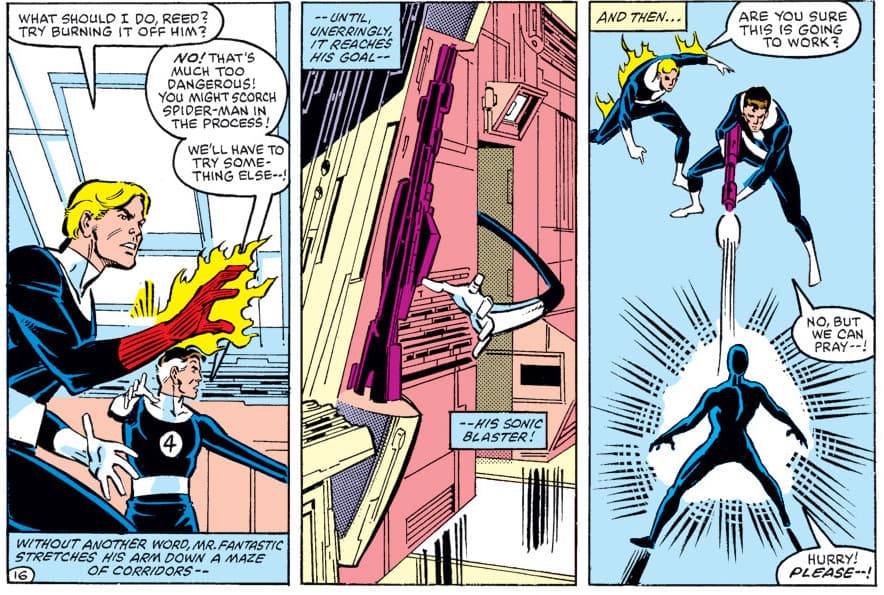 Marvel Comics
Marvel ComicsLoud sonics can weaken the Venom symbiotes
Symbiotes are naturally stunned by loud noises. In fact, the issue where Spider-Man’s costume is revealed to be an alien symbiote has Mr. Fantastic remove it using a Sonic Blaster.
Perhaps the more iconic example of this, though, would be the church bell Spider-Man uses to remove the suit when it attempts to re-bond with him. The ringing bell causes the symbiote to lose its grip, releasing Spider-Man from the bond.
The sonics don’t have to be direct, either. During Maximum Carnage, Venom came into battle holding a sonic blaster, and just using it was enough to make his symbiote uncomfortable.
 Marvel Comics
Marvel ComicsVenom is weak to extreme heat
Venom is weakened by extreme heat. A later retcon reveals this and the sonic weakness is actually intentionally designed by Knull so he could control the symbiotes.
The weakness means some surprising heroes are adept at fighting symbiotes. Firestar’s ability to generate heat by manipulating microwave radiation means she put even Carnage on the ropes when he was nearing the height of his powers.
Heat has also historically proven to be one of Venom’s biggest weaknesses. A burning building has proven to nearly be his downfall on more than one occasion, like when he fought Sin-Eater in the min-series Venom: Sinner Takes All.
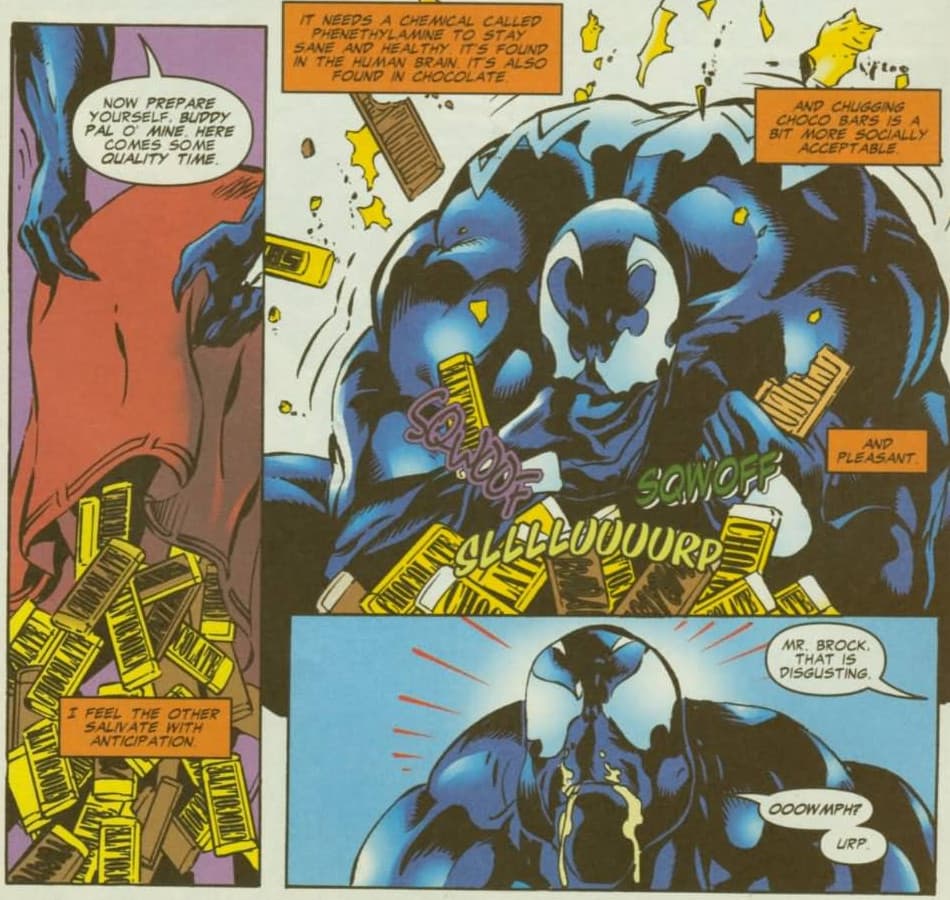 Marvel Comics
Marvel ComicsPhenethylamine can keep Venom “sane”
Venom’s more violent tendencies can be curbed by eating a bunch of chocolate or brains. This is because both contain Phenethylamine, which is naturally beneficial to the symbiote’s health.
Long before he was an anti-hero, Venom was a “lethal protector,” more or less drafted to help a government agency. Venom kept himself dosed with phenethylamine to make sure he stayed sane by eating huge quantities of chocolate bars.
The chocolate bars were the more pleasant option. Phenethylamine is also found in brains, something other symbiotes have no qualms about eating. Fortunately, Eddie Brock saw reason and stuck with candy bars.
That’s all we have for now about Venom’s strengths and weaknesses, but be sure to check out all our coverage for more on Venom, Spider-Man 2, and Marvel Comics.
